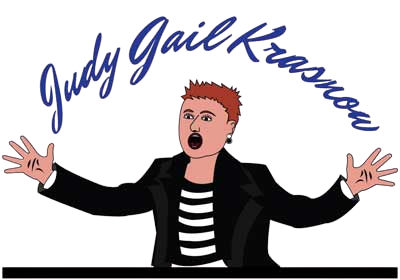Reviews

The Town That Shot Itself in the Foot
by Judy Gail Krasnow
book review by Mari Carlson
“Everyone has a story. Even the monsters and there is no place one can learn more about the human condition than in prison.”
When Miami becomes too expensive for the single, almost-retired performance artist, Rachel, an old penitentiary in Michigan being turned into an artists’ residence, The Hatchery, seems the perfect affordable housing option. Artists are promised studio space and support in turning their crafts into businesses. For Rachel, the prison itself becomes a source of revenue. She turns stories of ghosts of prisoners past, ex-prison workers, and living ex-cons into tours through the complex, as well as through a working prison. As her venture grows, however, so does the town officials’ animosity against her and other artists. The home that was once the answer to Rachel’s prayers becomes her own prison.
Starting with Rachel’s ideal life in Miami, surrounded by friends, fair weather, and ample work, the book sells The Hatchery with matching descriptions of the other artists, the beautiful landscape, and the possibilities laid out for artists. The Hatchery’s allure sets the stage for Rachel’s disappointment as the place’s prospects fall away and, worse yet, they are replaced by restrictive and punishing setbacks. Revenue and amenities are taken from artists. Factions form, dividing artists against each other and against Hatchery personnel. Conflicts are explored through vitriolic exchanges in litigious and exacting writing, including emails and letters exchanged between artists and Hatchery management. Driven by a pursuit of promises kept, the narrative builds a convincing case against those at fault.
However, conversations between residents lighten the mood, showing that vengeance is not the novel’s point. The residents are quirky. One is slovenly and swears a lot. Another misuses words. Others have infectious accents. Rachel’s vivaciousness comes across in her stories and extroverted exchanges. She brings people together over martinis. Overcoming difficult conditions, like the lack of heat and space, the artists make murals and put on a drag show and gallery exhibits that depict their creative, can-do energies. Songs, books quoted, and descriptions of natural beauty infuse the text with inspiration. Besides a prison, other analogies made by various characters, such as the one comparing The Hatchery to a roller coaster ride or a symphony, make the point that Rachel and friends work to keep positive in the face of condemnation. Like amusement park attendees or concertgoers, they move through turmoil toward levity and personal satisfaction.
While the book’s determined pacing is marked by a chronology of Rachel’s successes and defeats, spirituality also pervades the text. A different character narrates each chapter. Most are from Rachel’s perspective, but some are from her colleagues, enemies, and even the ghost of an ex-prisoner. These perspectives add reverence and activism to the story in the light they shed on prison conditions, life in the small Michigan town, and Rachel herself. The result is a compassionate feedback loop. As Rachel tells stories from the prison, some of the prisoner-narrators get to tell her story, giving back to the one who really heard them. The book then pays the kindness forward by celebrating stories. Krasnow has produced a unique novel, a work filled with relatable human drama and, more importantly, uplifting hope in the power of one’s own story.
RECOMMENDED by the US Review
